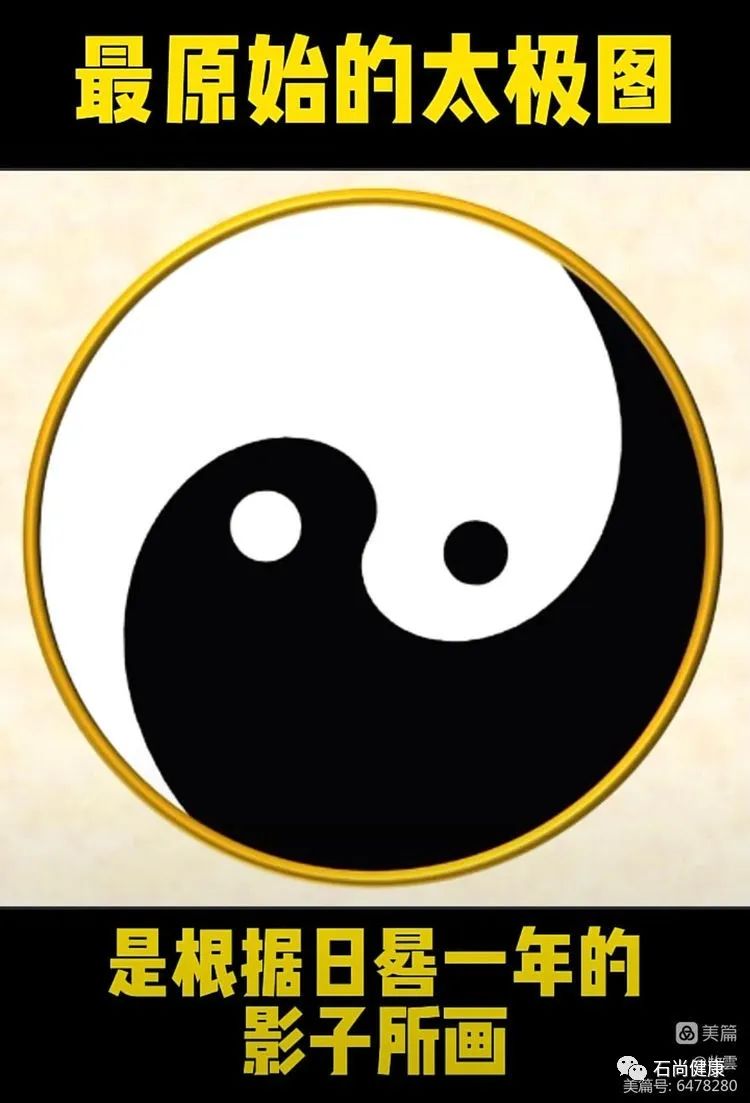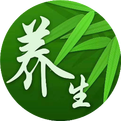
★The Relationship of Yin and Yang and the Importance and Function of Yin-Yang Balance
“Yin is the essence that stores and rises, while Yang is the protective force that solidifies.” This statement elucidates the physiological relationship between Yin and Yang. The term “rise” implies continuity. Yin essence continuously transforms into Qi, corresponding to the exterior, thereby allowing Yang Qi to perform its protective function. Yang Qi solidifies the exterior, preventing pathogenic factors from entering the body, ensuring the normal transformation of Yin essence. This mutual interaction, mutual restriction, and transformation of Yin and Yang align with the views on their interrelationship in the Suwen: On the Correspondence of Yin and Yang, which can mutually connect and verify each other. The Suwen: On the Transmission of Vital Energy to Heaven also illustrates certain pathological phenomena arising from their mutual influence, countering the relationship of mutual restriction and transformation between Yin and Yang. It states, “If Yin cannot overcome Yang, the pulse becomes thin and rapid (the pulse is rapid and urgent), leading to madness (when Yin merges with Yang, the spirit becomes chaotic); if Yang cannot overcome Yin, the Qi of the five organs contends (Yang deficiency and Yin stagnation, leading to obstruction of the nine orifices).” The pathology primarily involves Yin deficiency generating internal heat, resulting in a rapid pulse; Yang deficiency and stagnation of Yin Qi lead to the nine orifices lacking Yang’s warmth and circulation. Those who practice health preservation are adept at harmonizing Yin and Yang to achieve balance, as the “sage articulates Yin and Yang.” Such individuals have flexible tendons and meridians, strong bone marrow, smooth blood and Qi flow, internal and external harmony, and are not harmed by pathogenic factors, resulting in clear senses and normal Qi dynamics.
The Suwen: On the Transmission of Vital Energy to Heaven also provides examples of symptoms arising from Yin-Yang imbalance:
☛ Wind invades and damages Yin, leading to liver injury (excessive wind pathogen damages Yin fluids, easily harming the liver).
☛ Overeating leads to relaxation of tendons and meridians, causing diarrhea and hemorrhoids (food injury leads to relaxation of tendons and meridians, easily causing dysentery and hemorrhoids).
☛ Excessive drinking causes Qi to rebel (excessive drinking injures the stomach, causing stomach Qi to rebel).
☛ Excessive exertion injures kidney Qi, damaging the lumbar bones (excessive exertion in sexual activity injures kidney Qi, damaging the lumbar bones).
Yin and Yang are often in a state of dynamic balance; pathological changes such as excessive Yin or Yang, mutual damage, or separation can lead to various diseases. Therefore, the mutual balance of Yin and Yang is extremely important. The Suwen: On the Transmission of Vital Energy to Heaven profoundly discusses the importance of Yin-Yang balance and its relationship with the five flavors.
“In all matters of Yin and Yang, Yang must be dense to be solid; if the two are not harmonious, it is like having spring without autumn, or winter without summer. Harmonizing them is the way of the sage. Therefore, if Yang is strong but not dense, Yin Qi will be exhausted; if Yin is balanced, Yang is concealed, and the spirit is treated; if Yin and Yang are separated, the essence and Qi will be exhausted.” This passage is a significant discussion on the relationship of Yin-Yang balance. A detailed analysis is as follows:
“The essence of Yin and Yang lies in the density of Yang,” although the Tai Su states “Yin is dense and Yang is solid,” which is not without reason, it does not align closely with the original meaning. The author of the Neijing emphasizes the importance of both Yin and Yang, particularly the role of Yang Qi. This sentence is a biased structure, indicating that the key to both Yin and Yang is the density of Yang Qi, emphasizing its crucial role. If the balance between Yin and Yang is lost (i.e., “the two are not harmonious”), it is akin to the natural world having only spring without autumn, or only winter without summer. Therefore, maintaining this balance is the best principle for health preservation (the “way of the sage”). Li Nian’e noted: “When Yin blood is calm within, Yang Qi is solid and concealed outside; Yin nourishes essence, and Yang nourishes spirit. When essence is sufficient and spirit is complete, it is called treatment.” This balance between Yin and Yang is the most important guarantee for maintaining life activities. If Yin cannot overcome Yang, or Yang cannot overcome Yin, the balance is disrupted, leading to various pathological phenomena of Yin-Yang imbalance, which can severely threaten life, resulting in the separation of Yin and Yang or the serious consequence of “the essence and Qi being exhausted.”
Because Yin-Yang balance is so crucial, health preservation requires “to harmonize them, which is called the way of the sage.” In treatment, one must “carefully observe the location of Yin and Yang and adjust them, aiming for balance.” In diagnosis, one must “observe color and pulse, first distinguishing Yin and Yang.” Other chapters of the Neijing also emphasize the importance of this Yin-Yang balance. However, this balance is dynamic; it is in motion and change, not static. Due to various pathogenic factors, the balance is disrupted, and through treatment and adjustment, it can be restored. This cycle forms the basic law of life activities. Therefore, the Suwen: On the Transmission of Vital Energy to Heaven profoundly points out: “When Yin is balanced, Yang is concealed, the spirit is treated,” which is an important viewpoint that is not only significant in health preservation but also serves as a guiding principle in differentiation, treatment, and medication, possessing broad guiding significance. This statement means that when Yin Qi is retracted, Yang Qi is solid and concealed, and when Yin and Yang are balanced, the material and spiritual consciousness and cognitive activities of a person will function normally.
“The generation of Yin is fundamentally related to the five flavors; the five palaces of Yin are harmed by the five flavors.” This section elucidates the relationship between the five flavors (referring to various foods) and Yin-Yang balance. It implies that the transformation of Yin essence in the human body originates from the five flavors of food; however, excessive consumption or preference for certain flavors can become a cause of damage to the five organs. Zhang Zhizong stated: “Spirit and Qi arise from Yin essence, and the essence of the five organs arises from the five flavors, thus the discussion begins with Qi and ends with flavor,” clarifying this meaning. Yao Zhi’an stated: “Life arises from the five flavors, but damage also arises from the five flavors; indulging in what is good leads to harm.” This further explains the meaning of this section. The Yin essence of the human body originates from the transformation of the five flavors of food, which later generations refer to as the “postnatal foundation,” which is easy to understand. Why is it said that “the five palaces of Yin are harmed by the five flavors”? This is because, from the perspective of Yin-Yang attributes, among the five flavors, “spicy and sweet disperse as Yang, sour and bitter surge as Yin, and salty flavor surges as Yin” (Suwen: On the True Essentials), indicating that the five flavors can be divided into Yin and Yang. Under normal circumstances, the five flavors are the material basis for life activities and the original substance for transforming essence and Qi. However, if consumed excessively or with a long-term preference for certain flavors, it will disrupt the Yin-Yang balance of the body and lead to disease. Additionally, according to the theory of the five flavors entering the five organs, a preference for certain flavors will disrupt the balance among the five organs, thus it is necessary to “carefully harmonize the five flavors.”
☛ Excessive sour flavor leads to excessive liver Qi, where wood overcomes earth, causing liver Qi to consume fluids, and spleen Qi to be exhausted.
☛ Excessive salty flavor damages the kidneys and bones, causing skin dryness and loss of moisture, which can obstruct heart Qi. Excessive bone Qi leads to muscle shortening and heart Qi stagnation.
☛ Excessive sweet and bitter flavors lead to fullness of heart Qi, resulting in a dark complexion, and imbalance of kidney Qi. Excessive bitterness can cause heart Qi to be full, leading to weakness of kidney Qi (fire overcomes water).
☛ Excessive sweet flavor leads to spleen Qi not being moist, causing thick stomach Qi. Excessive sweetness can easily lead to stagnation of spleen Qi, preventing the stomach from transporting fluids, resulting in weak stomach Qi (thick implies thin).
☛ Excessive spicy flavor leads to relaxation of tendons and meridians, causing the spirit to be central. Overconsumption of spicy flavor causes metal to overcome wood, leading to relaxation and damage of tendons and meridians.
Pay attention to “Shishang Health” to master more health preservation knowledge!

